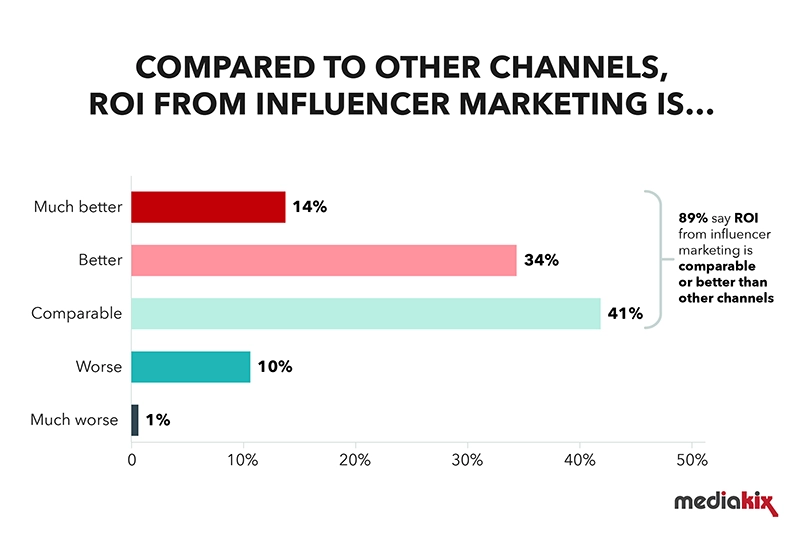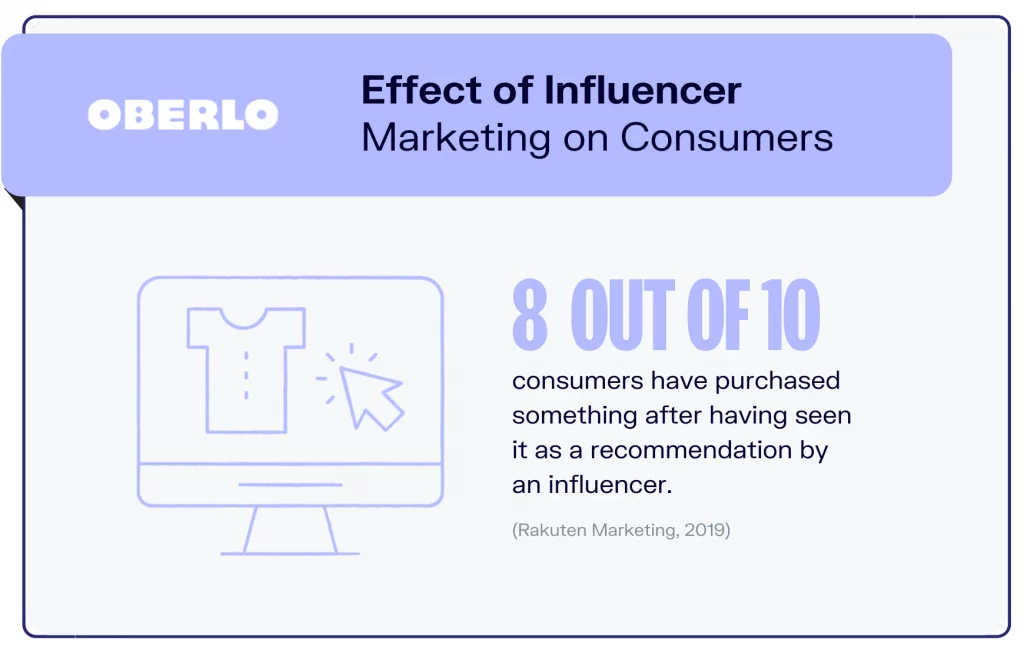Reading Time: 12 Minutes
Committing to understanding how influencer revenue tracking works can help you take your brand to the next level, particularly if you operate in the DTC ecommerce space. It’s not that much different from tracking sales through other marketing channels. Here’s how it works.
Influencers do more than drive revenue. But the fact remains that influencers – in particular micro influencers and brand ambassadors – boost revenues.

Today’s influencer-generated content represents some of the most authentic on-brand messaging online. These social media power users create an online community focused on specific lifestyle interests. Influencer followers are generally highly engaged and take that influencer’s product recommendations seriously.

The best influencer programs partner with influencers that love that brand’s products and servicers. Genuine brand affinity is what resonates with the influencer’s audience. The impact of that result is an increase in sales.
Investing in influencers shouldn’t be left to guesswork – it pays (literally) to know where your revenue comes from. Tracking influencer performance data prevents you from putting your marketing plan on autopilot or attributing your sales to the wrong channel.
Your objectives define what you hope to accomplish with every influencer campaign. When you break down your objectives into key performance indicators (KPIs), you establish how you measure progress toward reaching your marketing objectives.
“Tracking the right numbers is critical to the success of your influencer marketing campaign. Not only does setting KPIs help you identify success, but it also equips you to communicate those wins to your team (and your boss) that adds to the brand’s overall marketing goals.“
–The Total Guide to Influencer Marketing Measurement
Influencer performance data informs the entire marketing team on how quickly and efficiently your influencer campaigns are helping you achieve your goals. You can use performance data to create reports that showcase metrics important to you and your team and reports that demonstrate costs and sales.
There’s a lot of truth in the phrase, It’s all about the numbers. Those numbers tell a story about what’s working and what isn’t. You can watch numbers rise and fall as you test new tactics. When everyone around you presumes that one approach is better than another, you have hard numbers to prove that information outperforms assumptions.
There’s really only one way to measure influencer performance – you track it.
To track performance data, you need tools, and those tools can be homemade (like spreadsheets) or automated (i.e., GRIN’s influencer marketing platform). “Pulling data” means looking at specific metrics relevant to your marketing objectives and KPIs and then recording those metrics.
Tracking performance data allows you to see how results change based on different variables. You will also be able to see how certain metrics (such as post engagement and clicks) lead to conversions (i.e. sales).
As you track influencer performance and measure how quickly and efficiently your influencer program meets KPIs, you’ll start to notice trends. Certain types of posts, influencers, and calls-to-action (CTAs) are more effective than others.
This influencer data tells you where to devote your resources moving forward. Marketing is a trial-and-error process, and if you track metrics, you experience fewer errors over time. Before long, you can make decisions based between “good” or “better” rather than “effective” or “ineffective.”
Most influencer marketers have multiple objectives, such as brand awareness, website traffic, and sales. When it comes to revenue tracking, sales are your main focus. Revenue tracking is identifying which influencer performance metrics contribute to sales.
Getting started with revenue tracking means setting up some tools. These tools can be manual – building a spreadsheet and updating the appropriate conversion metrics. Or, they can be automated – the software pulls these metrics automatically and gives you filtering options to view the numbers you want to see.
Ideally, you set up your tracking tools before launching your first campaign. That way, you know what you’re looking for from your influencers, particularly as it relates to sales.
Within your tracking tool, you’ll want to think about short-term versus long-term revenue metrics. If you established your marketing goals and KPIs, then you can create tracking entries for each. Your short-term metrics track sales happening right away while your long-term metrics measure the number of prospects expressing interest in your brand, signaling future sales.
For revenue tracking, there are two critical metrics that you’ll want to watch closely. And those metrics are engagements and conversions.
Influencer engagements indicate how many people noticed and interacted with a post. Some of those interactions produce low impact, such as post likes. But others are more insightful, such as post comments and product questions.
Engagements typically take the form of likes, comments, and shares. You can calculate an influencer or campaign’s engagement rate by using the following formula below:
Number of followers or impressions / Number of engagements = Engagement Rate
The higher the engagement rate, the greater likelihood that your influencer posts are resonating with audiences. Engagement often signals content authenticity and usually attracts higher sales now and in the future.
For conversions, there are several different ways to track based on how you set up your campaign. Many DTC brands use coupon codes and affiliate links to track conversions. If you’re running a young influencer program with a small number of influencers, you may only need to track click-through rates (CTRs) on the relevant social media channels and your source traffic on Google Analytics.
Either way, you’re trying to determine which of your sales should be attributed to your influencer campaign. As your program grows, you will need more robust performance tracking tools. With an automated influencer tracking tool, the platform will pull all the relevant engagement, conversion, and attribution data for you.
There are many free analytics tools that you may consult to collect influencer performance data. For example, Instagram and Facebook offer analytics tools to your influencers, and you can ask your influencers to share that data from your campaign.
Google Analytics is another free tool to help you collect traffic information originating from your influencer posts. You can use flow visualization reports and custom funnels to measure conversion and revenue traffic. Lastly, your eCommerce platform may provide a decent amount of analytics information to help you attribute conversions to your influencers.
You may need landing pages associated with your influencer campaigns to collect the data accurately. Some marketers create a separate landing page for each influencer while others use one landing page for each campaign. In general, the more influencer-specific your landing pages, coupon/referral codes, and referral links, the more accurately you’ll be able to collect influencer revenue data.
Using the approach described above means consulting multiple platforms before extracting engagement and conversion metrics into your performance spreadsheet. This technique works for younger influencer programs, but they are tedious and unsustainable once you start working with more than a handful of influencers.
An influencer marketing automation tool like GRIN integrates each of these engagement and conversion metrics. Instead of digging for the numbers across multiple platforms and transcribing them into a spreadsheet, all the necessary performance metrics are right there in front of you. You can use the platform’s reporting tool to filter your revenue metrics.
Your influencer marketing program is successful when you meet your objectives and achieve your desired ROI. Influencer revenue tracking is the first step to calculating that ROI.
When taking a step back to track your influencer program success, you should have the following sales metrics handy:
Next, you want to examine the costs associated with your influencer program. Be sure to include the following data:
Once you’ve subtracted your costs from your sales, you know your profits. By dividing your profits by your costs, you achieve your ROI. As you scale your influencer program, your goal is to find ways to streamline your costs and boost your sales.
Influencer program sales – Influencer program costs = Influencer program profit
Influencer program profit / Influencer program costs = Influencer program ROI
As you feel more comfortable calculating your influencer program ROI, you can find different ways to enhance your campaign results. To accomplish this, you should use the ROI tools mentioned above to find your influencer and campaign ROI.
Simply isolate your influencer and campaign sales and costs. Using these isolated metrics, you can examine the ROI for each individual influencer and campaign. High-performing influencers and campaigns can give you insights into what works, while low-performing influencers and campaigns signal areas where your program needs to improve.
Our team keeps a finger on the pulse, so you’re always working with the latest information.